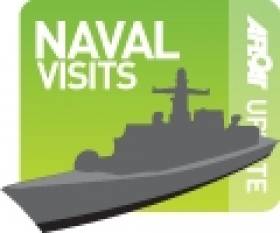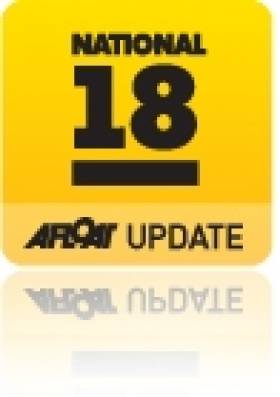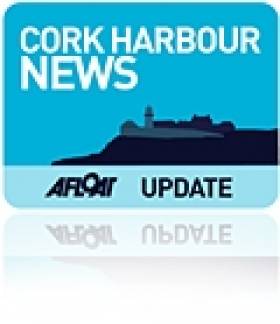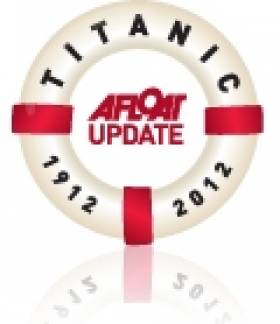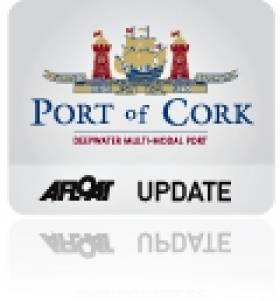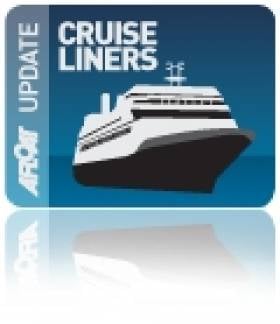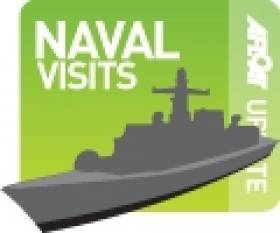Displaying items by tag: Cork Harbour News
Waste Firm Drops Court Challenge Over Cork Harbour Incinerator
#CORK HARBOUR NEWS - A waste management firm has dropped its High Court challenge against the refusal of planning permission for an incinerator in Cork Harbour, the Irish Examiner reports.
Indaver last night pulled out of its legal challenge just days before a full judicial review of An Bord Pleanála's decision on the €140 million project in Ringaskiddy was set to begin.
However, a harbour residents group opposed to the incinerator proposals have given the "shock" move a cautious welcome.
Chase urged Indaver to "finally walk away" from the project as it has emerged the company is in pre-applications talks with An Bord Pleanála under its 'strategic infrastructure' process.
The Irish Examiner has more on the story HERE.
Haulbowline Toxic Site Could Be Cleaned Up By Late 2015
#CORK HARBOUR NEWS - The head of the team working on the clean-up of the toxic dump on Haulbowline Island says the site could be made safe by the end of 2015, as the Irish Examiner reports.
More than a year ago the Government signed off on a €40 million package to begin the clean-up of the toxic waste site at the former Irish Steel/Ispat plant in Cork Harbour, which closed more than a decade ago.
The site contains an estimated 500,000 tonnes of waste, including toxic heavy metals and various cancer causing materials such as Chromium 6.
Minister for the Marine Simon Coveney tasked Cork County Council with responsibility for managing the clean-up operation, which is scheduled to finally begin by mid-2014, according to project manager Dr Cormac Ó Súilleabháin.
In the meantime, the council must lodge an application for a waste permit licence with the Environmental Protection Agency (EPA).
Dr Ó Súilleabháin added that an analysis of the results from a risk assessment of the site in June last year had led to the conclusion that the majority of the waste should be left on the site, sealed off and topped.
The Irish Examiner has more on the story HERE.
Where the 'Mersey' Meets the Lee
#NAVAL VISIT- The Royal Navy's River class patrol vessel HMS Mersey (P283) is currently moored in Cork City, at the South Quay on the River Lee, having arrived yesterday, writes Jehan Ashmore
The vessel which has crew of 45, is employed on enforcing UK and EU fishery protection law while out on surveillance duties, which can be at least 275 days annually. Boarding parties are sent out from the ship to inspect fishing vessels to make sure they have the right nets, the right log books and the right licences.
The patrol vessel was built by Vosper Thornycroft in Southampton, and she can be also used for anything from fire-fighting to disaster relief operations.
Fleet of 18 Contesting National 18 Title in Cork Harbour
#national18 – With 8 to 10 knots of a westerly breeze saw the first day of the National 18s Irish Championships sponsored by North Sails in Cork Harbour yesterday writes Claire Bateman. This is the largest one design fleet in the harbour and 18 boats came to the line. Certainly the top half of the fleet showed just how competitive this class is. Sailing off Trabolgan with the weather mark off Roches Point, the fleet got in three good races. The first race was a windward leeward and this was followed by an Olympic course that took a black flag to get the fleet away cleanly.
Racing continues today with FG 11.55hrs as per the Sailing Instructions and not 10.25hrs as per the Notice of Race.
Also in the harbour yesterday a fleet of twenty or so Optimists were heading out to get in some practice for the Cobbler League that will commence next weekend. These intrepid young sailors can never seem to get enough of the water!
Today also sees the start of the highlight event of the Autumn Season the CH Marine Autumn Regatta with this event counting for the SCORA League.
Countdown to Cork Harbour Open Weekend
#CORK HARBOUR – The Cork Harbour Open Weekend (15 & 16th September) as previously reported on Afloat.ie, will be a fun-filled action packed programme for all with activities on and off the water.
The weekend is a great opportunity for people to see exactly what Cork Harbour has to offer, with the second largest natural harbour in the world playing host to the annual Cobh to Blackrock sailing race, kayaking on the River Lee, crab fishing in Cobh and a free open day at the National Maritime College of Ireland (NMCI) in Ringaskiddy.
In Cork city, the Irish Naval Service CPV L.E.Ciara (P41) will be open to the public for free tours on the Saturday and Sunday.
To celebrate Cork Harbour Open Weekend, Spike Island is offering a family day out on the Island with live music, children's entertainers and an opportunity to walk on the recently completed Walking Trail around the perimeter of Fort Mitchell with stunning views of Cork Harbour.
For the latest news and of the other programme activities and events lined-up for the weekend, click HERE.
A downloadable programme including a map of the free ferry shuttle running (both days 12noon-3pm) throughout the harbour will help in planning a visit. For further details of the ferry, click HERE.
Royal Navy Attend Presidential Fleet Review for Cobh Titanic 100
#COBH TITANIC 100 - Following President Michael D. Higgins visit to Cobh to commemorate the centenary call of RMS Titanic to Queenstown, the town yesterday hosted a Naval Service review that included the Royal Navy's HMS Mersey.
The President as supreme commander of the Defence Forces boarded the Naval Service 'flagship' L.E. Eithne which passed the guest-ship, a River class patrol vessel which headed a line of vessels which lay at anchor of Cobh's waterfront, they were the L.E. Aoife, L.E. Aisling and L.E. Niamh
The historic event which marked the pinnacle of the Titanic 100 Cobh centenary week will continue as part of a year-round programme of events. For information visit www.titanic100.ie. On the homepage the L.E. Niamh features again, where on this occasion marine photographer Jehan Ashmore captured the vessel underway as she powered her way at high-speed through a misty Dalkey Sound.
Among the many places throughout Cobh where thousands of tourists have flocked since the Balmoral docked on Monday to retrace the liner's maiden voyage, has been the White Star Line pier.
From this pier were the last passengers to depart Queenstown on board the tenders PS Ireland and PS America to the ill-fated Titanic that struck an ice-berg. On her Irish call 123 passengers were transferred to the Titanic which lay outside Cork Harbour, while 7 passengers disembarked from the liner and headed ashore.
What remains of the pier which is not accessible to the public and is in danger of collapsing, there has been calls to raise funds to save the structure, as previously reported.
Also in attendance during yesterday's historic proceedings, was the excursion passenger tender Spirit if the Isles which is operating on her second season since starting Cork Harbour cruises last year. They run between Cork city quays and downriver along the Lee to Cobh.
In the 1980's the tender then named Ingot ran excursions from Dun Laoghaire Harbour into Dublin Bay and likewise of L.E. Niamh, she too transited Dalkey Sound as part of her sightseeing tours.
- RMS Titanic
- White Star Line
- Cobh Cruise Callers
- Cobh, Cork Harbour
- Cruiseships
- Balmoral
- FredOlsen Cruise Lines
- Titanic Memorial Cruise
- naval service
- LEEithne
- Royal Navy
- HMS Mersey
- President Michael D Higgins
- Queenstown,Ireland
- PS Ireland
- PS America
- Spirit of the Isles
- Cork Harbour Cruises
- Cork Harbour News
- Dalkey Sound
- LE Niamh
- LE Aoife
- LE Aisling
- Cork Harbour
- River Class Patrol vessels
- River Lee
- Irish marine photographers
President Visits Cobh Commemoration of Titanic 100
#COBH TITANIC 100 – President Michael D Higgins attended a ceremony in Cobh, Co Cork this afternoon to mark the 100th anniversary of Titanic's maiden voyage.
The liner's last port of call was to Cobh (then Queenstown) and was where the last passengers boarded the White Star Line's liner.
The tribute, part of Cobh's Titanic 100 programme of commemorative events, saw a naval fleet review and a flyover from the Irish Air Corps. For more the Irish Examiner has a report.
The 'Banana' Trade Returns to Cork
#PORT OF CORK – Global shipping giant Maersk Line recently started their first ever direct service to Ireland with a new liner service calling to the Port of Cork and sees the return of the 'banana' trade not last seen in port since the 1970's, writes Jehan Ashmore.
The older 'banana' boats or reefers that used to serve Cork may be long gone but the Danish owned Maersk Line will be operating an impressive pool of eight large contiainerships. They will bring leading banana brands from Central American ports to Europe with Cork being the first port of call in Europe. The liner service starts in the Mexican port of Vera Cruz and includes calls to Costa Rica, Belize, Panama before reaching Cork.
One of the vessels Maersk Nolanville (2004/26,833grt) last week docked in Ringaskiddy Deepwater Terminal, is one of the largest of her type to be accommodated in the port. At 700m long, a beam over 30m and drawing a draft exceeding 10m the South Korean built vessel was too large to berth at the ports Tivoli Container Terminal further upriver on the Lee.
Maersk Nolanville and her fleet-mates will operate with a weekly call to Cork on Thursdays, where quayside cranes in Ringaskiddy will handle the 2,500 (TEU) capacity vessels including around 800 refrigerated containers containing perishable tropical fruits.
Asides bananas the vessels will import other cargoes, with the containerships also calling to Tilbury in the UK and Rotterdam and with exports on the return leg of the long trans-Atlantic voyage home.
A Tale of Two Sisters: Cobh’s Former Liner Tenders
#LINER TENDERS – As Dubliners and visitors alike enjoy the facilities of Cill Airne, the River Liffey's floating restaurant and bar venue, her sister, Canima is in complete contrast, as she rusts away on the far side of the Atlantic, writes Jehan Ashmore.
The Camina was originally launched as Blarna along with Cill Airne from the Liffey Dockyard in the early 1960's as passenger tenders serving the trans-Atlantic liners out of Cobh for the Cork Harbour Commissioners. The 1,000 passenger capacity sisters, each around 500 gross tonnes, were the last vessels to be built using riveted hull constructed methods in Europe.
With the collapse of the liner trade and proliferation of the jetliner in the early 1970's, they had served short careers in Cobh. Blarna was sold to North American interests while Cill Airne remained in Irish waters. She was sold to the Cork Institute of Technology for radar and navigation training on the River Lee and Cork Harbour.
By 2003 Cill Airne's days were numbered as she became obsolete when high-tech simulators formed part of the National Maritime College of Ireland (NMCI) in Ringaskiddy.
She was sold to Dublin investors in 2006 having completed an extensive restoration project at Hegarty's Boatyard in West Cork. She reflects her liner era heritage with art-deco fittings, wood panelling and timber decks throughout, for more click HERE.
As for Blarna, she later served in Bermuda which lasted until 1988. To read more on what her former captain from the Bermudian career has to say on her fate in Canada, where there are plans to secure her future as reported on the RoyalGazette, click HERE.
Dutch Navy Stealth Frigate to Visit Cork City Centre
#NAVY VISITS -HNLMS Evertsen (F805) a Dutch naval frigate with a crew complement of 200 is due to make a weekend courtesy call to Cork City, berthing at J.J. Horgan's Wharf, writes Jehan Ashmore.
She is a sister of HNLMS De Ruyter (F804) which docked in Dublin Port last month, as previously reported in this section. The 144m frigates form two of a total of four De Zeven Provinciën-class air-defence and command frigates (LCF). The class present sharp angular lines (see PHOTO) due to stealth design technology to minimise radar signature detection.
Armament consists of a bow-mounted Oto Breda 127 mm cannon, vertical launch systems for various missile types, a 'goalkeeper' rapid-fire gun, an Oerlikon 20mm machine gun and a Mk. 46 Torpedo weapon system. At the stern she can carry a Lynx or NH-90 helicopter.
They displace 6,050 tonnes and propulsion plant are 2 x Wärtsilä 16 V26 diesel motor engines (13,600 hp total), 2 x Rolls Royce Spey SM 1A gas turbines (52,300 hp total). The class can achieve 30 knots and entered service between, 2001-2005 from the Royal Schelde Group shipyard in Flushing.





























